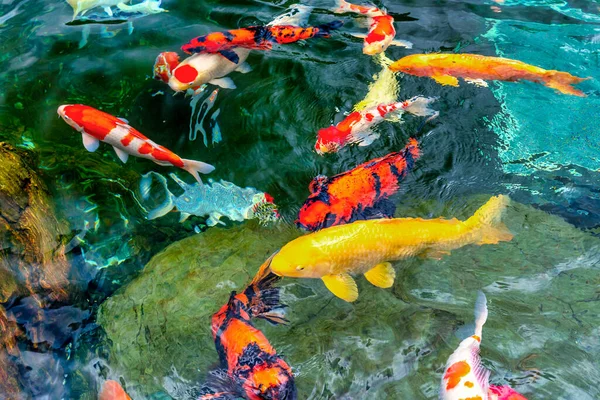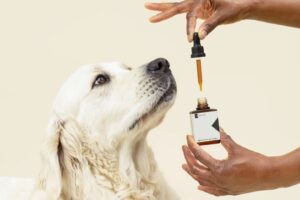How to Take Good Care of Butterfly Koi Fish

Butterfly koi fish are a stunning and unique variety of ornamental fish, well known for their long, flowing fins and vibrant colors. They are a hybrid of traditional koi and long-finned carp, which gives them their distinctive appearance. These fish have become a favorite among pond enthusiasts and aquarists due to their beauty and graceful swimming style.
If you are considering adding butterfly koi fish to your pond or aquarium, this guide will provide all the essential information on their care, habitat, feeding, and tank requirements.
What Are Butterfly Koi Fish?
Butterfly koi fish, also known as long-fin koi or dragon koi, originate from Indonesia and belong to the Cyprinidae family. They are peaceful, hardy, and can live for many years if cared for properly. These fish come in a variety of colors, including red, yellow, orange, black, and blue. One of their most striking features is their long, flowing fins that grow longer as they mature.
On average, butterfly koi fish can reach between 36 to 40 inches in length and live for 25 to 35 years. Due to their large size, they require ample space to swim freely, making ponds a more suitable environment than tanks.
Are Butterfly Koi Fish Hard to Care For?
Butterfly koi fish are relatively easy to care for, making them a great choice for both beginners and experienced fish keepers. They are peaceful and adaptable but require proper maintenance to thrive. The key factors for their well-being include sufficient space, high water quality, and good oxygen levels.
Water Conditions and Maintenance
Butterfly koi fish are cold-water fish, but extreme temperatures can affect their health. To keep them comfortable, the ideal water temperature should range between 65-75°F. If the temperature drops too low, it may lead to health issues, while excessively high temperatures can lower oxygen levels and increase harmful ammonia levels. In winter, a pond de-icer can help prevent the water from freezing, allowing koi to breathe properly.
To maintain water quality, regular water changes are necessary. It is recommended to replace a portion of the water every week or every other week. A good filtration system, such as a pond filter or an aquarium filter for tanks, helps remove waste and toxins like ammonia and nitrite.

Feeding and Diet
Butterfly koi fish are omnivores and require a balanced diet. Their food should contain a good mix of nutrients and proteins. High-quality pellets with at least 30% protein are ideal. They can also eat vegetables, insects, and occasional treats like shrimp or worms.
Feeding them once or twice a day is sufficient, and they should be able to finish their food within two minutes. In colder months, their metabolism slows down, so it is advisable to reduce their food intake accordingly. Using an automatic pond fish feeder can help regulate feeding portions and timing.
Can Butterfly Koi Live With Regular Koi?
Yes, butterfly koi fish can live peacefully with regular koi fish since both are part of the carp family and share similar temperaments. However, there are some noticeable differences between the two:
- Fins: Butterfly koi have long, flowing fins that continue growing, while regular koi have shorter fins that stop growing at a certain point.
- Body Shape: Butterfly koi have a sleek, torpedo-shaped body, while regular koi have a more oval shape.
- Whiskers: Butterfly koi have slightly longer whiskers compared to regular koi.
If keeping them in an aquarium, a 75-gallon tank or larger is recommended. Essential equipment includes a strong filter to remove waste and toxins, an air pump to maintain oxygen levels, and a vacuum cleaner to help keep the tank clean. A thermometer should also be used to monitor the water temperature.
Aside from regular koi, butterfly koi can also coexist with pond goldfish. However, small fish like guppies and danios may become food for koi, and aggressive species like cichlids can injure butterfly koi, making them unsuitable tankmates.
Can Butterfly Koi Fish Live Without an Air Pump?
The survival of butterfly koi fish without an air pump depends on the density of fish and the size of their living space. If too many fish are in a small area, oxygen levels will quickly deplete, and the fish may only survive for a few hours without aeration. Generally, butterfly koi can live for about two days without an air pump, but a prolonged lack of oxygen can be fatal.
Signs that butterfly koi are lacking oxygen include:
- Gasping for air at the water’s surface
- Loss of appetite
- Staying at the bottom of the tank or pond
To maintain oxygen levels, an air pump or air stone is recommended. Warmer water holds less oxygen, so extra aeration is particularly important during hot weather. It is best to keep an air pump running for at least 4-6 hours daily in a low-density tank. For densely populated tanks or small ponds, running an air pump 24/7 is ideal.
Final Thoughts
Butterfly koi fish are a wonderful addition to any pond or large aquarium. Their graceful movements, vibrant colors, and long fins make them a mesmerizing sight. They are peaceful, easy to care for, and can live for decades with the right environment and proper maintenance.
Providing clean water, a balanced diet, and sufficient space will ensure your butterfly koi thrive for years to come. If you have a pond and are looking for a beautiful and low-maintenance fish, butterfly koi are an excellent choice!







